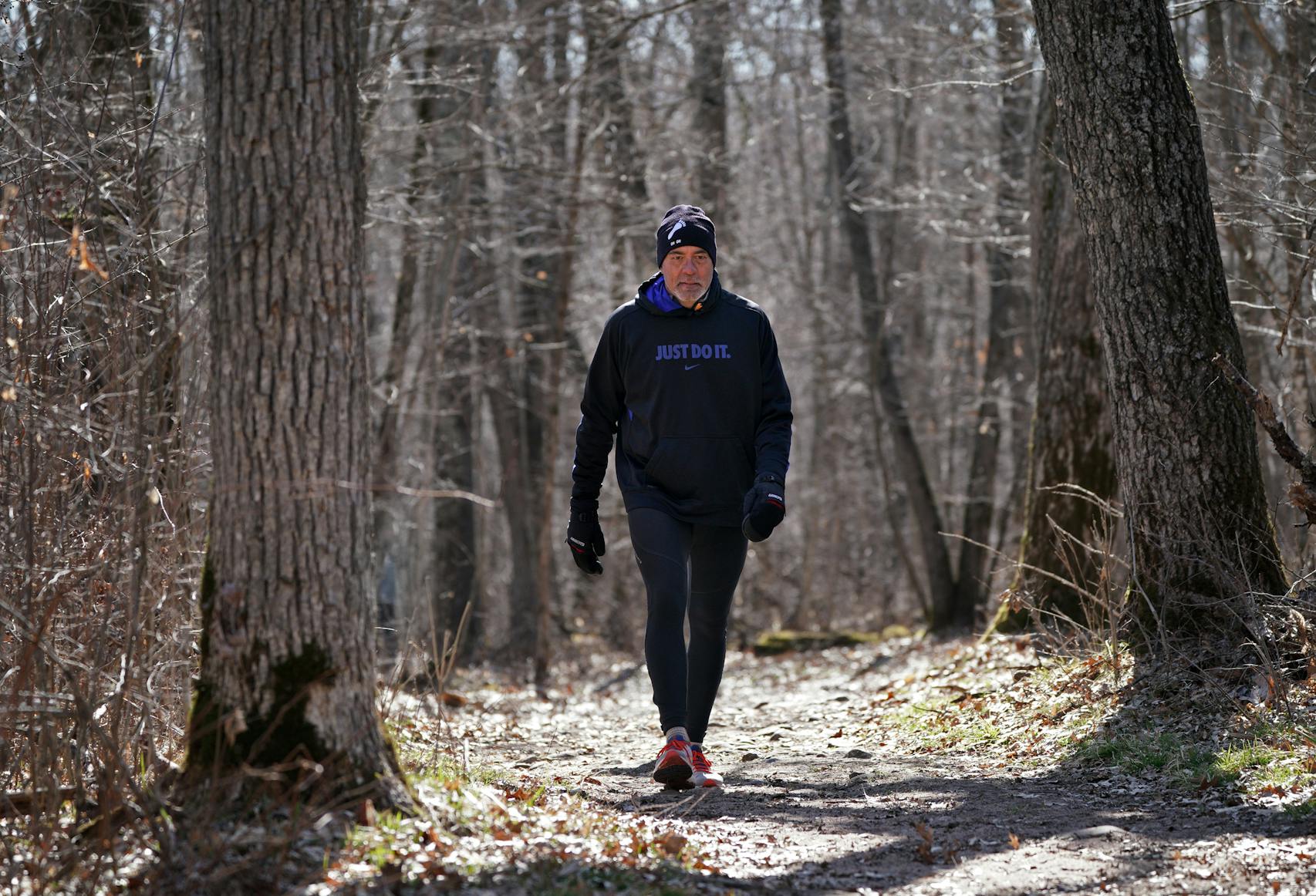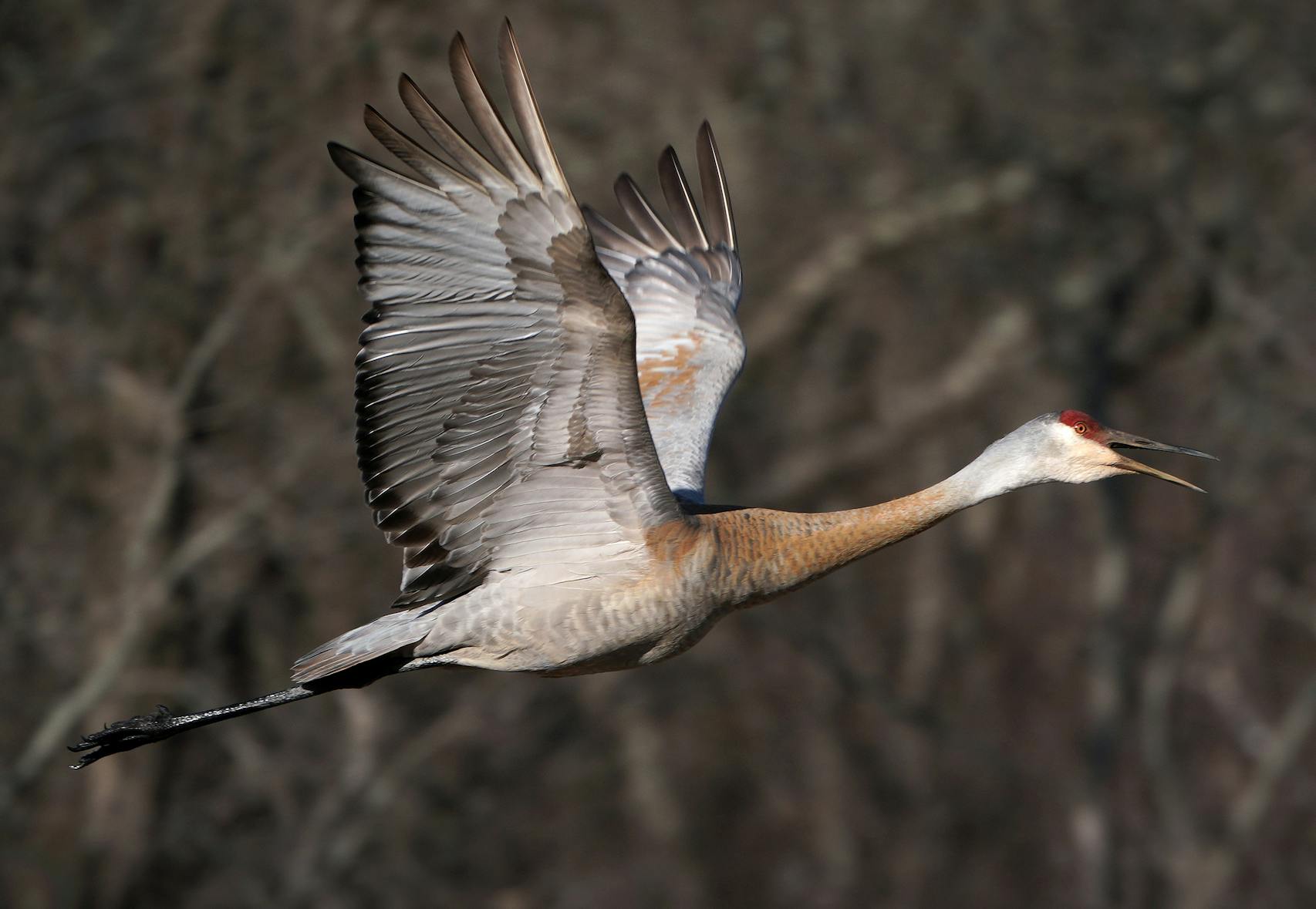NEAR CENTER CITY, MINN. — Not long after sunrise Tuesday, under a hard-blue sky and glittering sun, Dave Medernach hiked alone on the southern edge of Wild River State Park.
The Eagan man's work and upcoming adventure plans to Arizona have been derailed by the coronavirus pandemic. He's using the new time and energy he's found to explore nearby public lands, like this part of the park's diverse woodland and wetland straddling the St. Croix River.
He isn't alone.
Unlike Washington state and Oregon, which closed their entire park systems to the public until at least early May, Minnesota's Department of Natural Resources has kept all but one of its 76 state parks and recreation areas open. That is good news for Medernach, 61, and thousands of others who are visiting some of them like never before. Record numbers are showing up on weekends.
Parks close to the Twin Cities and in southeastern Minnesota have been among the biggest magnets. Afton State Park is one hot spot, said DNR spokesperson Kim Pleticha. March visits have increased more than 120% from a year ago (an estimated 14,149 visitors in 2019; 33,617 last month).
"Needless to say, it's been really, really crowded," she added.
The DNR acknowledges the importance of keeping the parks accessible as a place of sanctuary, but the agency concedes future park operations are in limbo because of the pandemic.
A pressing question as May — and summer — approaches: When will state park camping resume? The DNR closed campgrounds, lodging and rental facilities March 30 until May 4 to align with Gov. Tim Walz's stay-at-home order and the need for social distancing. The action includes 50 state forest campgrounds, too.
For many, camping plans begin to come together in the weeks ahead. What's more, thousands of Minnesota campers locked in state-park reservations months ago, some for premium weekends at popular parks such as Gooseberry and Tettegouche on the North Shore and Itasca in the northwest. Currently, they can modify or cancel those by May 4 without penalty.
State parks and recreation areas have drawn an annual average of 9.7 million visits in recent years, with more than a million people spending overnights in everything from campsites to camper cabins to group camps.
All those campers and visitors amounted to $29 million in revenue in the 2019 fiscal year for the DNR's parks and trails system. Additionally, the ripple effect on local economies is estimated at nearly 10 times that amount ($276 million).
Pleticha said returning the park system to normal won't be an overnight process, regardless of stay-at-home timelines. Yet, assuming Walz's order expires May 4, the state "could begin to open things up," she added.
A first step: Recall 380 seasonal workers to parks and recreation areas.
"Getting parks up and running … we have to get all of our seasonal workers in to do that job," Pleticha said.
The workers include naturalists, those staffing for visitor centers and park maintenance, and more.
"Many of our suspensions and cancellations are not tied to the stay-at-home order," Pleticha said, referring to public gatherings and other park routines. "They are tied to social distancing to prevent the spread of COVID-19. So, we would need to evaluate those services if and when the stay-at-home order is lifted or modified."
High traffic
The sudden rush of visitors ("unprecedented," Pleticha said) has forced crowd control at some parks, where offices are closed for regular business and the pandemic has left staffing bare-bones. One strategy has been to close parking lots when they're full. Some high-traffic examples:
• Itasca State Park: Visits at the popular park at the headwaters of the Mississippi River are up 36% over its four-year average. At the other end of the state, Whitewater State Park had 368 daily paid visits at the park kiosk in March, with 536 through April 14.
• Nerstrand State Park: The spot near Faribault had more visitors April 4-5 (426 and 480) and April 11 (399) than it did over the July 4th weekend in 2019. It averaged 359 daily visits from July 4-7.
• Lake Maria State Park: The park near Monticello had a record number of cars (465) April 11. The previous mark was 410 in the fall of 2016.
It's not only parks. Some trails, too, are busier than ever.
Brown's Creek State Trail, which courses into Stillwater and is one of the state's newest multiuse paths, is averaging more than 400 walkers, runners and cyclists per day, Pleticha said. A year ago it was averaging about 145. Other trails across Minnesota, such as Glacial Lakes, Heartland, Root River, Sakatah Singing Hills and Willard Munger, also are seeing unusually high use.
The DNR also is experiencing the same challenges as cities such as Minneapolis — a lack of consistent social distancing by people who are using popular outdoors destinations. Pleticha said some of the responsibility falls on parks visitors to self-manage and avoid crowded areas, while enjoying time outdoors.
"[Park staffers] are doing their very best to make sure people adhere to social distancing," she said, "but that's really hard when we get this many people at a park. We're asking people that if you pull into a park and see that the lot is full … it's better to turn around than to recreate at that park."
unding for the parks and trails system has tightened in recent years, while the use of the areas and pressure on the resources have increased.
Pleticha said the DNR can't speculate on immediate economic impact of the transition at parks.
"This is an unprecedented situation for all of us, and with that comes a lot of uncertainty," she said.
Among the DNR's seven divisions, Parks and Trails has the biggest piece of the DNR's biennial budget of $1.2 billion and accounts for 23% of all spending. The system is sustained by multiple sources. Some operating money comes from the state's general fund. There also is the natural resources fund; dedicated money from pots created by the voter-backed Legacy Amendment; recreational use fees; and lottery money.
A bright spot, Pleticha said, is visitors who have complied with entry fees at park entrances or bought their $7 daily passes in advance online.
Medernach, the Wild River State Park visitor, sees no barrier in the weeks ahead to getting into Minnesota's park gems. Laid off as a part-time certified public accountant, he plans to hit what he can within an hour or so of home. He was at Wild River for the first time.
"I want to explore," said Medernach, well-prepared against the morning chill in a cap, tights and mitts. His wife, Jennifer, oftens joins him. They've visited Afton and Frontenac parks, and desire to hit the North Shore "if things loosen up," he said.
Medernach settled in for a time to talk in the embrace of the trail's red pines, the flowering bloodroot and hepatica on the forest floor, the rattling calls from nearby cranes.
The park coming to life.
"This is my savior," he said.
Twitter: @rltimm
Carolyn Parnell, 'trailblazer' who served as Minnesota's first IT commissioner, dies









